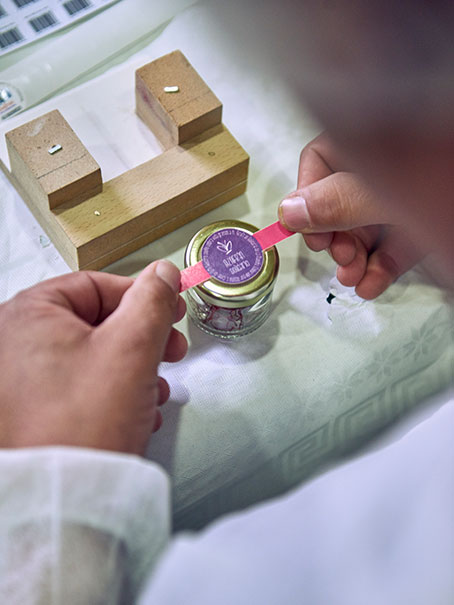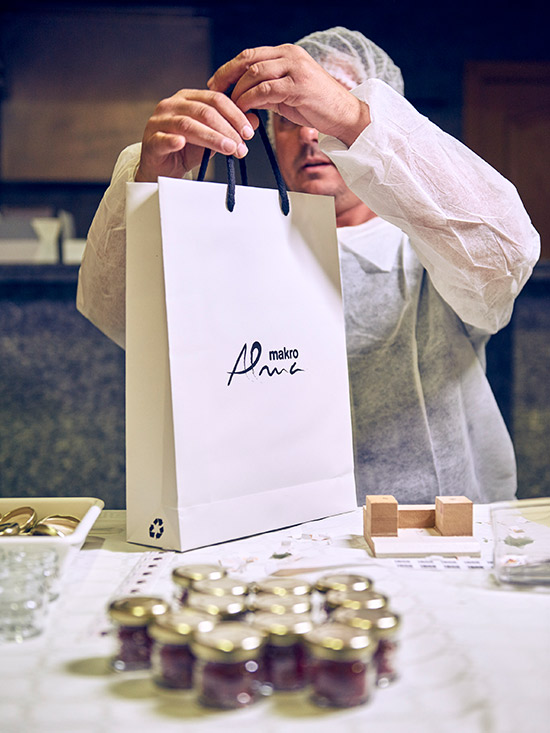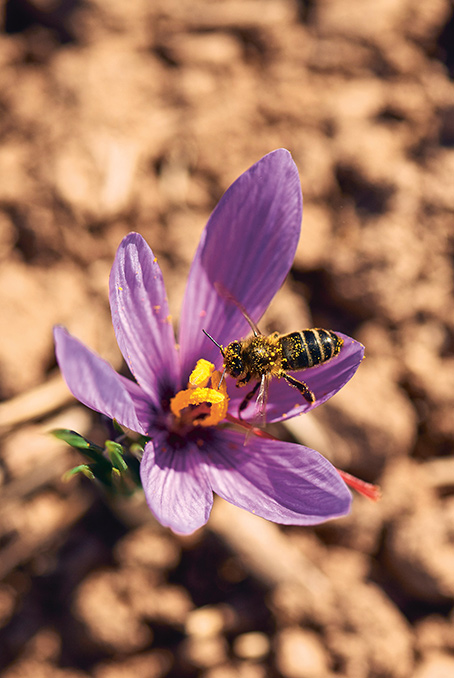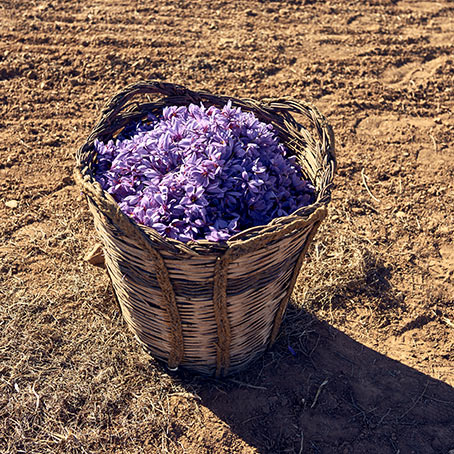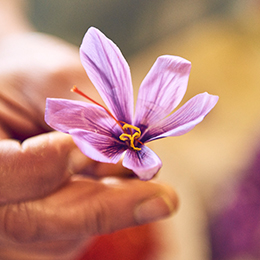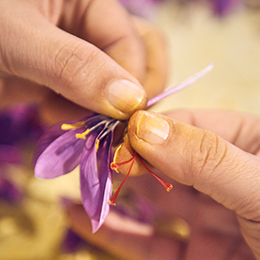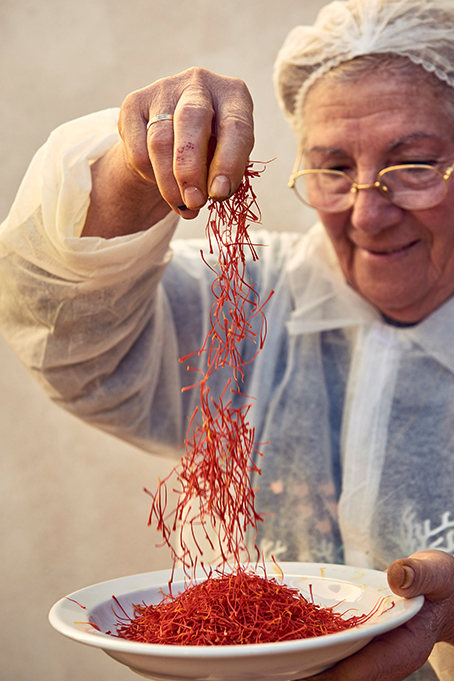WHY IS LOCAL PRODUCE SO OFTEN SO GOOD? Scroll Down
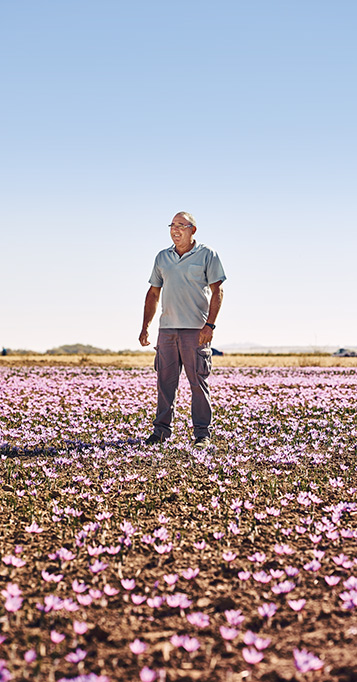
Castilla-La Mancha, a region in central Spain, grows the world’s best saffron, according to saffron producer Jesús Sánchez Cruza. So what makes it so special? It’s the natural, traditional methods of harvesting, cleaning and roasting that make the difference. THANKS TO ALMA MAKRO, AN INITIATIVE OF MAKRO CASH & CARRY SPAIN that provides financial support for traditional cultivation by local producers, and thanks to passionate helpers from his village, he has been able to increase his yields over the past few years.
I It is nearly 11 o’clock and the sun shines bright from the clear blue sky. A purple glimmer lies over the crocus fields. Between the precisely planted rows of flowers, around 15 people are helping with the harvest. Stooping, the women and men carefully pluck the delicate flowers and place them in a brown wicker basket. Saffron producer Jesús Sánchez Cruza has mingled among the harvesters, where he passes on a few tips.
The saffron crocus, also known as Crocus sativus, belongs to the iris family. From its roots on, the plant can grow to a height of 30 cm. 6 petals protect the 3 stigmas inside the flower. It is these 2.5 to 4.5 cm long stigmas that will yield the saffron. The finest of all spices is sown in August and starts flowering at the end of October. This is when the short harvest season begins. It will end again in the middle of November.
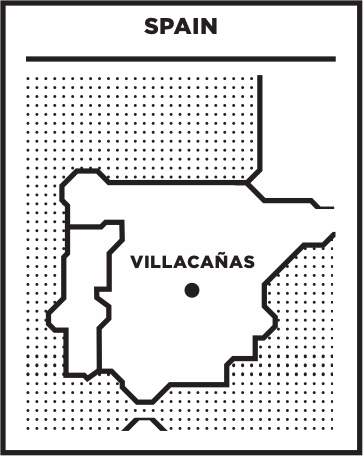
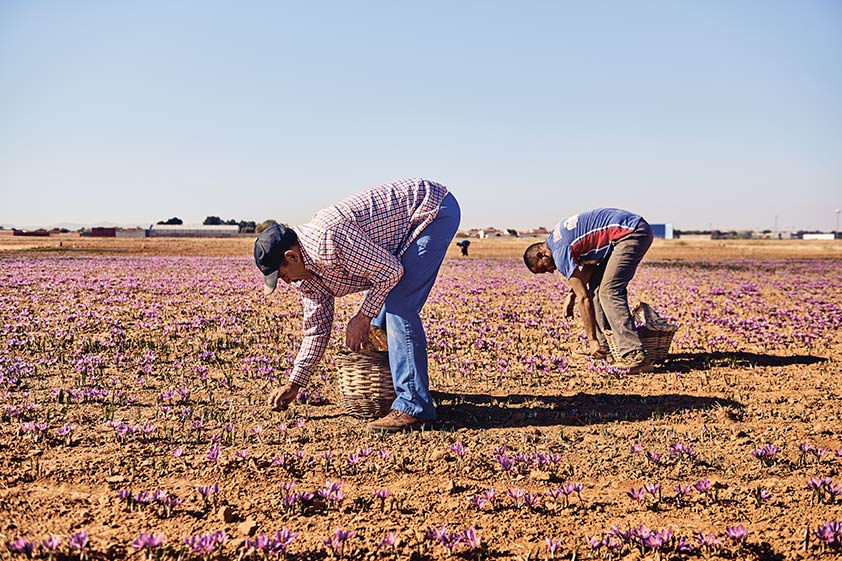
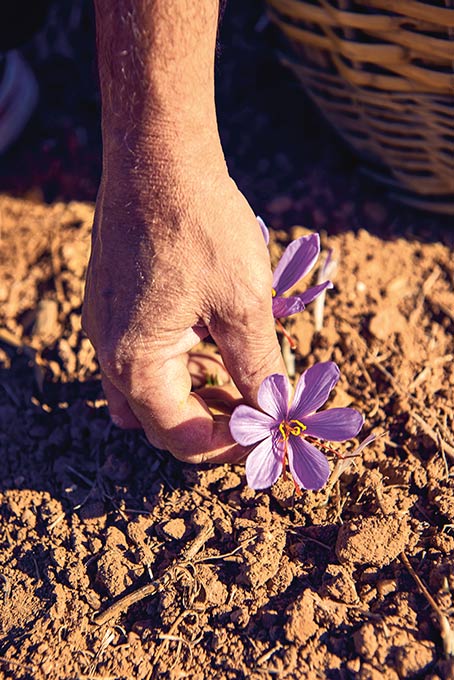
Crocus sativus flowers for just 2 to 3 weeks each year. Purple petals protect the stigmas inside the flower. It is these that will provide the saffron later.
Just like magic, in autumn the fields in La Mancha are transformed overnight into a glorious sea of colour. The time has come at last – and the flowers must be harvested immediately. The delicate crocus flowers cannot survive the Spanish sun for long and risk wilting. To prevent this, the harvesters go out every day. Harvesting by hand is a laborious business but, so far, there is no machine that can do this work. “The flowers are too delicate,” says Jesús Sánchez Cruza. “They want to be handled with care. For me, picking is the nicest part of the production process.” The 55-year-old is not only a successful saffron farmer, but is also President of the Asoma Cooperativa.
The Asoma Cooperativa is a non-profit cooperative of 9 saffron producers. As well as creating jobs for people, they are helping to revive saffron production in La Mancha. For a long time, there weren’t many saffron growers in the region. The saffron crocus is relatively easy to grow in principle, in the right climate. However, making a profit from it is much harder. “The competition is fierce,” explains Jesús Sánchez Cruza. “Moreover, you need around 250,000 flowers to produce a kilo of saffron. It’s very rare for a farmer to be able to survive on the saffron harvest alone.” He himself grows vegetables as well. Thanks to the support of Alma MAKRO, the Asoma Cooperativa has managed to keep increasing harvests since the project started in 2014. “To start with, our 2.5 hectares were producing around 4 to 5 kilos a year. Now we’ve managed to increase production to between 10 and 12 kilos of saffron a year,” he says. Their biggest customer is MAKRO Cash & Carry Spain.
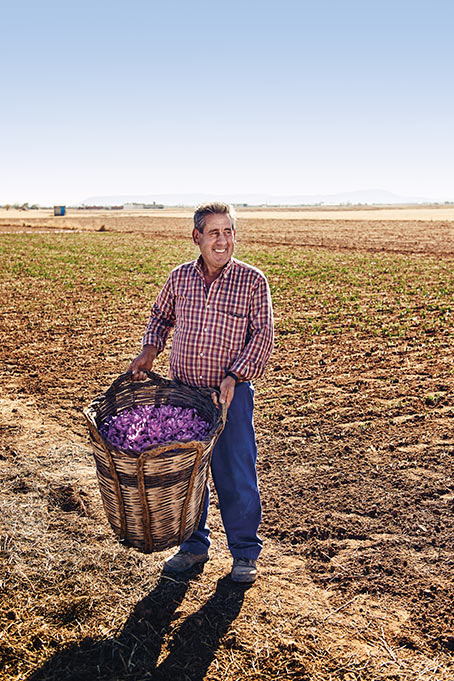
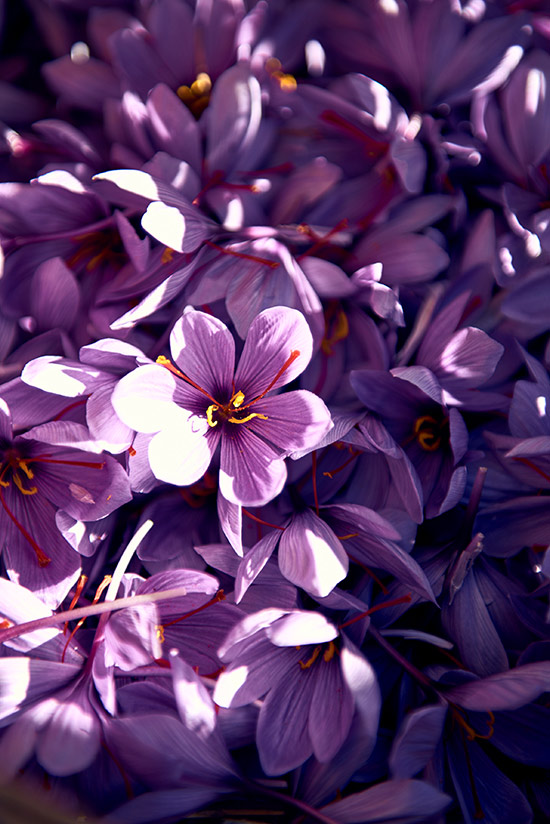
Crocus sativus flowers for just 2 to 3 weeks each year. Purple petals protect the stigmas inside the flower. It is these that will provide the saffron later.
Through its Alma MAKRO initiative, the company is helping producers in the region continue with their traditional craft. Customers can buy the cooperative’s saffron in 37 MAKRO stores. It is the world’s best saffron, according to Jesús Sánchez Cruza, “because saffron from Castilla-La Mancha gives a better flavour and colour to dishes than any other type.”
From the field, the saffron is taken for further processing – not to a factory but to a house in the idyllic village of Villafranca de los Caballeros. Passing through a grand gateway and beautiful courtyard, you come to the main house. Inside, the intense smell of saffron is reminiscent of tea. In the middle of the room is a long table covered with a white cloth, on which hundreds of crocus flowers are spread. Around 25 women and men, most of them past retirement age, are removing the 3 delicate red stigmas from the flowers. The rest lands on the floor. The purple petals may be beautiful, but there is no further use for them.
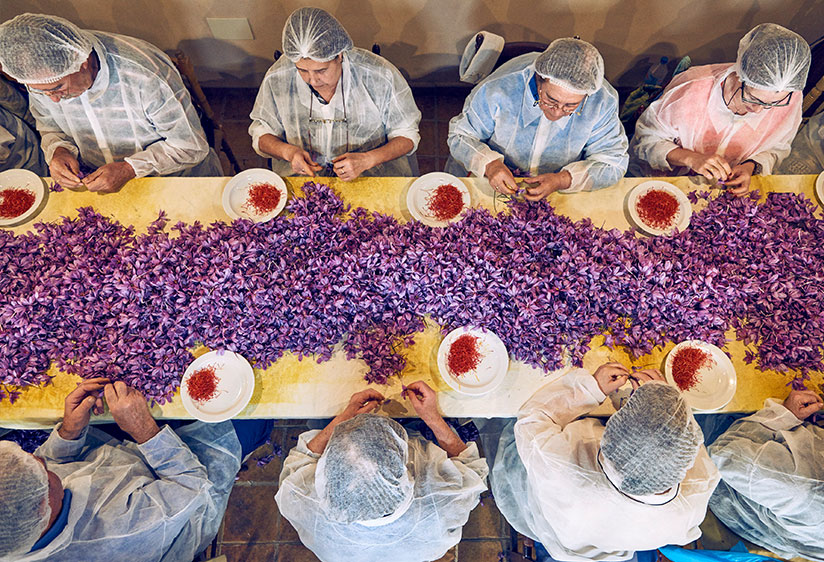
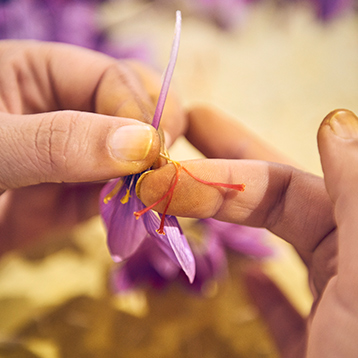
Women and men from the village painstakingly remove the delicate red stigmas by hand.
There is a cheerful, almost family atmosphere among the helpers. “That’s what it’s all about for them,” explains Jesús Sánchez Cruza. “They use the harvest as a pastime, meet other villagers and swap news.” They receive saffron or “red gold” as payment instead of money. They can take a third of their day’s output home with them.
While most of the women and men are at the table busily removing the stigmas, another woman is roasting them. The aroma is not released until the stigmas are roasted over charcoal in a cylindrical sieve. Some say that saffron can have up to 150 different flavours: it starts sweet, with a slight hint of vanilla or caramel. Over the years, it becomes more and more powerful, like liquorice. Saffron is a seasoning that has a wide range of uses in the kitchen. However, it needs to be used with care. Because of its very intense flavour and colour, just 0.1 grams is enough for classic Spanish paella for 6 people.
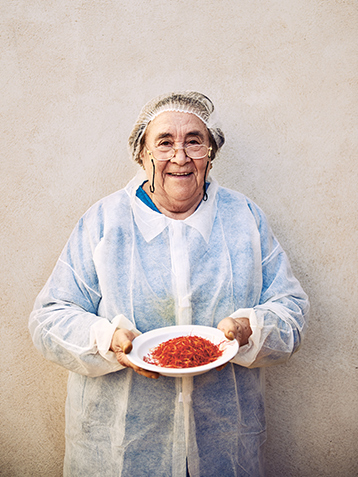
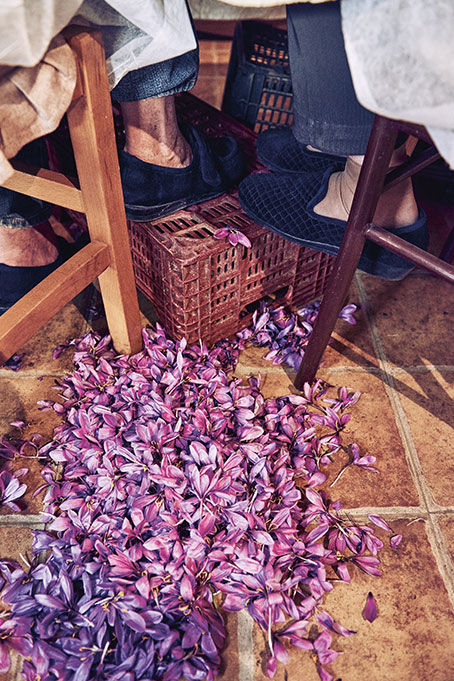
The helpers receive saffron or “red gold” as payment instead of money. They can take a third of their day’s output home with them.
ALMA MAKRO – DOING THINGS WITH LOVE
Through its Alma MAKRO initiative, MAKRO Cash & Carry Spain helps small-scale farmers and producers in Spain to carry on despite tough competition and to produce authentic products using traditional methods. In doing so, MAKRO Cash & Carry Spain supports the local economy and offers its customers a unique product range that prioritises quality and sustainability.
Before the roasting process, the saffron strands are checked for other plant remains. Anything that isn’t red has no flavour and must be removed. “Because of this meticulous work by hand we ensure that only the stigma strands from each flower end up in our product. No impurities are permitted. This is why the quality of our saffron is up to 45% higher even than that of our competitors in the region,” explains Jesús Sánchez Cruza. 2 or 3 women are responsible for the last stage: the professional packaging. They roll the saffron in small pieces of parchment to make it easier to fill the 1 gram and 2 gram jars. Once the jars are labelled, the saffron is ready to be sent out to the MAKRO stores.
The day is drawing to a close. For the helpers, it’s time to go home after hours of work. New blossoms will appear overnight. In the morning it will be time to start again: picking, selecting, roasting and packing.
